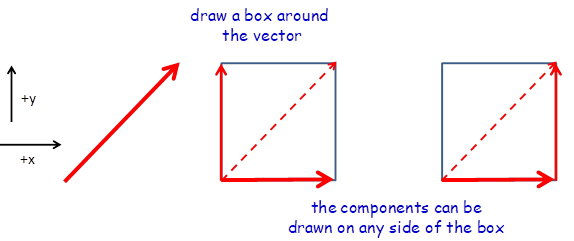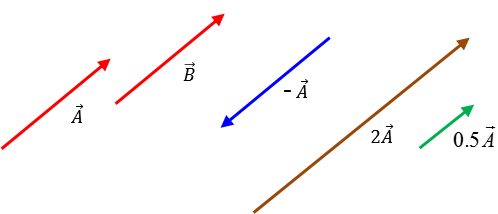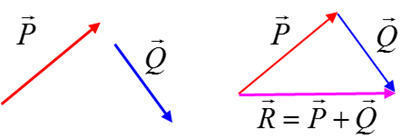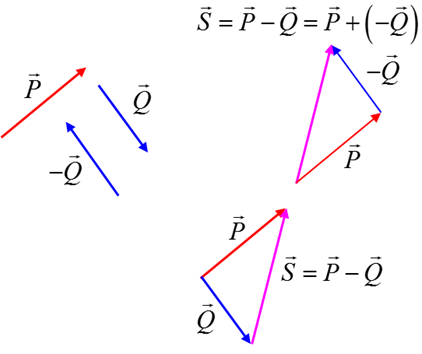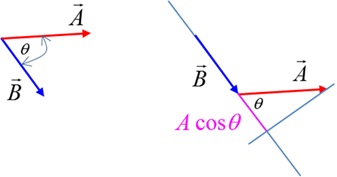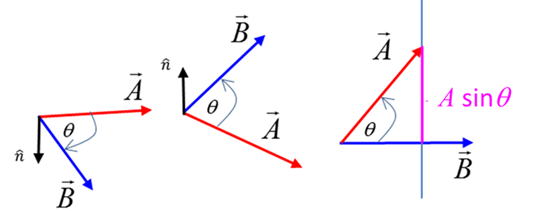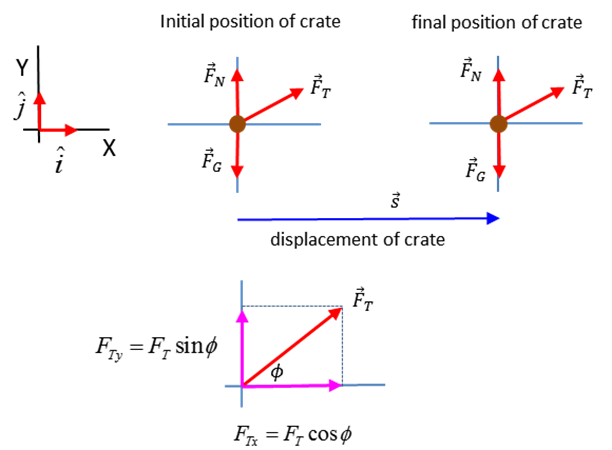|
THE LANGUAGE OF
PHYSICS SCALAR AND VECTORS Ian Cooper email matlabvisualphysics@gmail.com
SCALAR QUANTITIES Physical quantities that require only a number and a unit for
their complete specification are known as scalar quantities.
mass of
Pat mPat = 75.2 kg Pat’s
temperature TPat = 37.4 oC Pat’s
height hPat
= 1555 mm
Fig. 1. Scalar
temperature field. At each location, the temperature is specified by a number
in oC.
Fig. 2. Scalar
rainfall field. At each location, the rainfall is specified by a number in
mm. In physics, a scalar field is a region in space such that
each point in the space a number can be assigned. Examples of scalar fields
are shown in figures 1 and 2 for temperature and rainfall distributions in
Australia respectively. VECTORS magnitude direction components Physical quantities that require for their complete
specification a positive scalar quantity (magnitude) and a direction
are called vector
quantities. Today
the wind at Sydney airport is
Fig. 3. A magnitude
and direction is needed to specify the wind. The black lines represent the
pressure (scalar) and the red arrows the wind (vector). The length of an arrows is proportional to the magnitude of the wind
and the direction of the arrow gives the wind direction.
The
[2D] vector Magnitude (size)
Direction
X
component Y
component
Resolving a vector into its components
Fig. 4. Resolving a vector into its X
and Y components. N.B. The two Cartesian components replace the
original vector. Avoid the mistake of many students who add the two
components to the original vector, thus counting it twice. Vector algebra
· Two vectors are equal if they have the same magnitude and
small direction · The negative of any vector is a vector of the
same magnitude and opposite in direction. The vectors · Multiplication
of a vector by a scalar · Vector
addition: vectors can be added using a
scaled diagram where the vectors are added in a tail-to-head method or by adding the components. The sum of the
vectors is called the resultant vector.
The
vector ·
Vector
subtraction: can be found by using the rule of vector addition
· Two vectors can’t be multiplied together like two scalar
quantities. Only vectors of the same physical type can be added or
subtracted. But vectors of different types can be combined through scalar
multiplication (dot product) and vector multiplication (cross product). · Scalar
product or dot product of
the vectors
The projection or component of The result of the scalar product is a scalar quantity. If two
vectors are perpendicular to each other, then the scalar product is zero If the two vectors are in the same direction, then the scalar
product is A B · The vector product or
cross
product of two vectors
The magnitude of the vector The vector The angle between the two vectors is always less than or equal
to 180o. The sine over this range of angles is never negative,
hence the magnitude of the vector product is always positive or zero The direction of the vector product is perpendicular to both the
vectors
VECTOR EQUATIONS Consider
the motion of an object moving in a plane with a uniform acceleration in the
time interval t. The physical
quantities describing the motion are Time
interval Displacement Initial
velocity Final
velocity Acceleration The equation describing the velocity as a function of time
involves the vector addition of two vectors The equation describing the displacement as a function of time
involves the vector addition of two vectors The
velocity as a function of displacement. Warning: the
equation stated in the syllabus is totally incorrect Two
vectors can’t be multiplied together. The correct equation has to show
the scalar product between two vectors This
equation should not be given in vector form but expressed as two separate
equations, one for the X components and one for the Y components
Work and the scalar product Consider
a tractor pulling a crate across a surface as shown in figure 5.
Fig. 5. A crate
being pulled by a tractor. We
want to setup a simple model to consider the energy transferred to the crate
by the tractor. In physics, to model a physical situation, one introduces a few
simplifications and approximations. So, we will assume that the crate is
pulled along a frictionless surface by a constant
force acting along the rope joining the tractor and crate. We then draw an
annotated scientific diagram of the situation showing our frame of reference. The
crate becomes the System for our investigation and the System is drawn as a
dot and the forces acting on the System are given by arrows as shown in
figure 5.
Fig. 6. The System
is the cart (brown dot). The forces acting on the System are the force of gravity Energy
is transferred to the System by the action of the forces doing work on the System.
Work is often said to be equal to a force multiplied by a distance A
much better definition of the work done by a constant force causing an
object to move along a straight line is to use the idea of scalar (dot)
product where the angle Work
done by the gravitational force and by the normal force are zero because the
angle between the force vectors and displacement vector is 90o (cos(90o)
= 0). The
work done by the tension force is Hence,
the work done on the System is the component of the force parallel to the
displacement vector multiplied by the magnitude of the displacement.
What is
the physics of opening a door?
It
is the torque applied to the door that is important and not the force. A
force can cause an object to move and a torque can cause an object to rotate.
A torque is often thought of as a force multiplied by a distance. However,
using the idea of the vector (cross) product we can precisely define what we
mean by the concept of torque.
The
vector
The
concept of the scalar product is not often used at the high school level,
but, by being familiar with the concept of the scalar product you will have a
much better understanding of the physics associated with motion. Also,
the concepts of unit vectors, scalar product and vector product are not
covered in the Syllabus. However, having a more in-depth knowledge will help
you in having a better understanding of Physics and will lead to a better
performance in your examinations. · A vector has a magnitude and
direction. You can’t associate a positive or negative number to a
vector. Only the components of a vector are zero or positive or negative
numbers. ·
Scalars
are not vectors and vectors are not scalars. ·
In
answering most questions on kinematics and dynamics you should draw an
annotated diagram of the physical situation. Your diagram should show objects
as dots; the Cartesian coordinate System, the Origin and observer; the values
of given and implied physical quantities; a list unknown physical quantities
physical; the units for all physical quantities; principles and equations. |








